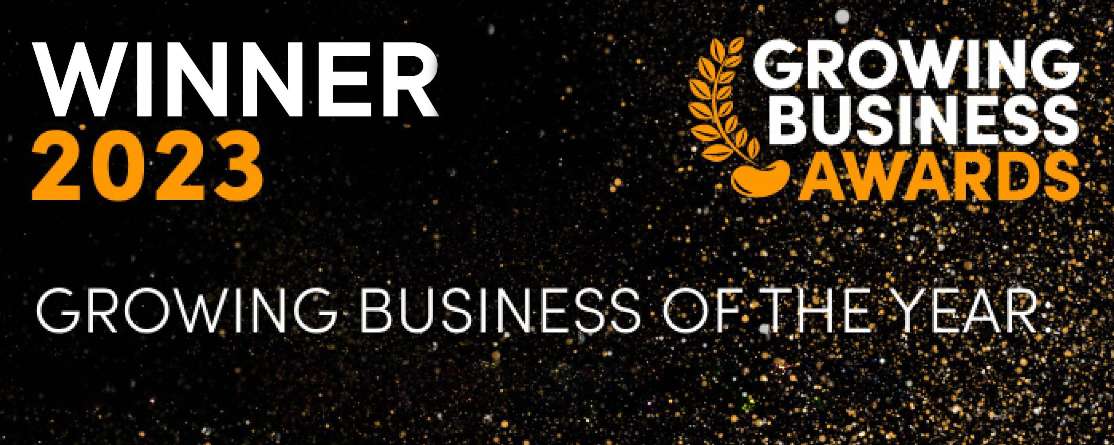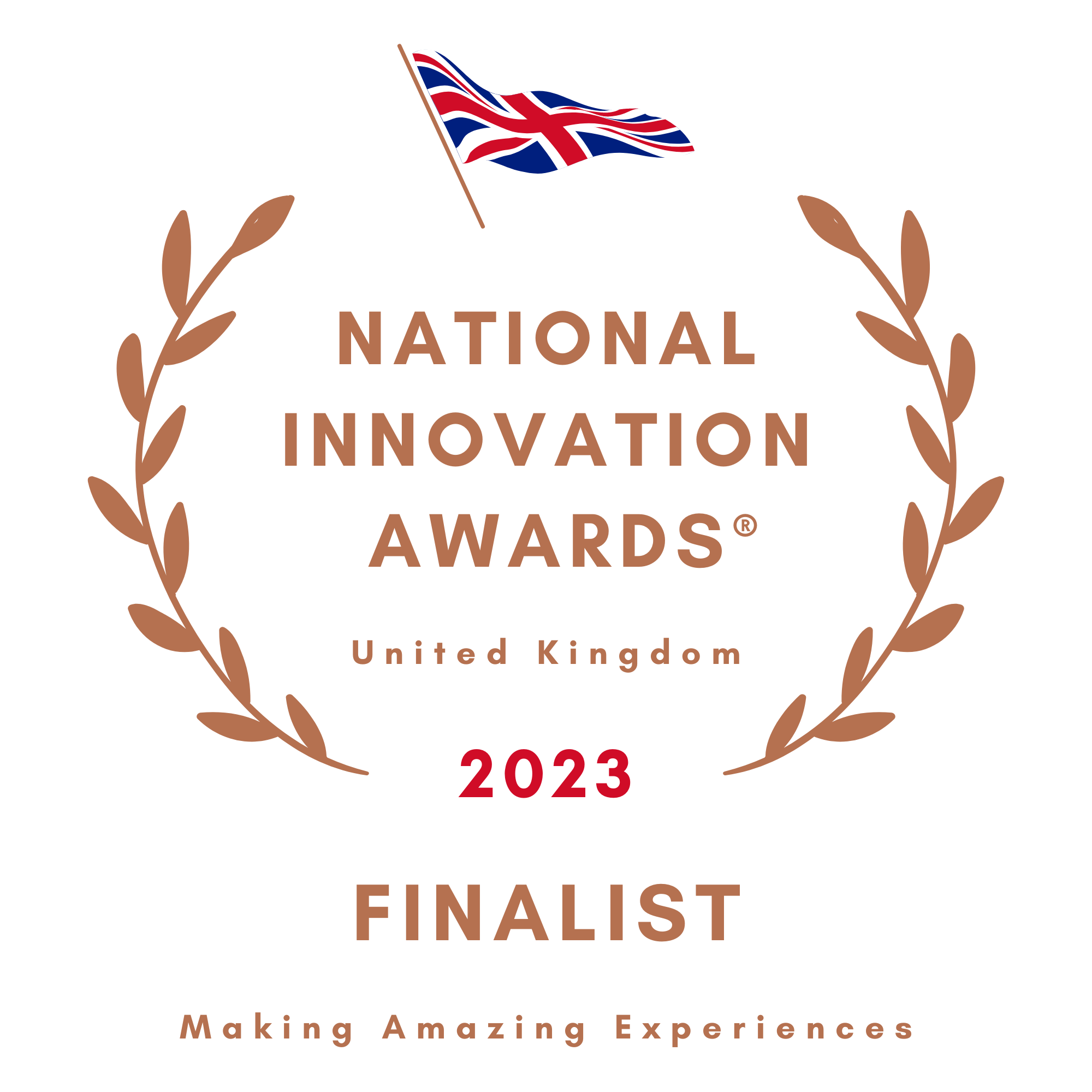Dragonfly AI is a predictive analytics platform designed to help you improve the quality and effectiveness of your creative across any format, channel and market.
3 Trends Impacting the Beauty Industry
Expert-led podcast discussing trending articles, and news in the AI and attention spaces.
.png?width=621&height=621&name=Rectangle%203102%20(1).png)
Podcasts led by experts
3 Trends
Impacting the Beauty Industry

Forbes has identified the 3 biggest trends impacting the beauty industry right now which will shape the industry for years to come. The long-term trends we’re talking about are:
- How marketing is being done now
- Technology
- Men
Marilena Florea, eCommerce Strategy and Operations Consultant joins Rebecca Shepherd, Strategic Partnerships Manager, to discuss everything from engagement to personalization and the wild world of TikTok.
Q: Given the rising importance of short videos in beauty marketing, particularly on TikTok, what challenges do you foresee for brands in maintaining a balance between creating entertaining content and effectively communicating their brand identity?
Marilena: I think TikTok’s importance and TikTok’s impact on the beauty industry cannot be overstated. Media and advertising budgets are being diverted to TikTok, often at the expense of other platforms. In 2022, TikTok ad revenues reached almost 10 billion, more than double versus the previous year. TikTok set new benchmarks for customer engagements. By number of users, TikTok is number six, but it takes top spots in engagement rate. The platform is the number one social media for product discovery. Shoppers often say that they purchase something that they saw on TikTok, even if they weren't actively shopping. It's the main channel to connect with Gen Z and Gen Y, the trendsetters and the tastemakers. Beauty brands had to embrace TikTok and adapt to its algorithm and its content requirements which are highly differentiated. I think TikTok reinvented storytelling.
Becky: TikTok was the most downloaded app worldwide in 2022. I did read that in America, the ages of 35 to 54, the downloads tripled in 2022 from that demographic. When we actually think about the beauty industry or any brand in general, I think we've got to think, has TikTok got my audience there? And also, can I provide content that my audience wants? And I think when I think about TikTok, there's a level of authenticity that we get from short-form videos when we compare them to perhaps other short-form videos on other platforms. TikTok has been incredible in driving this level of personalization because actually, it's at the end of the day about co-creation. When we're creating with TikTok to create these short-form videos in a personalized manner, we're co-creating with influencers and bloggers. These bloggers don't necessarily need to be followed by millions and thousands of people, because of the algorithm that's set behind it, it gives everyone a chance to go viral. I think the importance of TikTok is obviously huge. It's something that brands really shouldn't leave untapped.
Marilena: I remember I was reading the stats. 65% of marketers say that professional-looking videos from brands, look out of place. And TikTok challenged Instagram's curated look of perfection, idealism, rigidity, broad imperfection, experimentation, and humor. And brands can experiment. And I think TikTok is a kinder place for failure. And it's also the biggest world collection of niches. find anything and anyone from all sorts of quirky characters to situations to preferences. In my experience as a consultant, I worked with clients who were first movers. These were the tech-savvy companies, the D2Cs, and the online first brands. They were quick to adapt and to understand TikTok's algorithm and content requirements. On the other hand, there were the “wait and see”, the more risk-averse brands and they struggled to move out of this aesthetic focus. curated look, they were slower to engage with customers on TikTok.
Becky: When you're co-creating and partnering with influencers, that's where the control goes slightly out the window. That's what I see as probably the main challenge in terms of maintaining brand identity, particularly when we're talking about short-form videos on TikTok. I guess perhaps different like we've touched upon already in things like Instagram, because that's very much managed by brands as opposed to the influencers.
Q: Considering the growing trend of startups focusing on technology innovation, obviously in what we do, we're looking at attention and AI in the beauty sector. How do you see the competitive landscape evolving over the next few years, specifically with AI in enhancing product development and refining marketing strategies for beauty brands?
Becky: Marketing really can be the result of success or failure for these brands when they're entering the market or even when they're releasing a new product. Technology is providing insight into consumers and ensuring that whatever we're providing in terms of marketing and our strategies are backed up by data. If I think about Dragonfly, what we're able to do is show attention, where attention is going on your marketing, universally, so not just through one particular market segment. If you think about that then you know that before you go live with any content and you know that actually, certain elements are going to be seen if you are a very well-known beauty brand say Chanel and you're releasing a new product, it must be amazing to make sure that actually people are seeing this new product and your logo. It's giving you that insight into your consumers to allow you to fail fast, but actually to give you that insight to actually avoid even failing in the first place because you're providing what your customers need and what your customers want.
Marilena: If we think about the beauty industry, there is a relatively high number of new beauty startups launched every year, high relative to other industries. The barriers to entry are low in the industry. We see new brands launched either by influencers, by celebrities, by doctors. There's always something new in the window or online. This leads to high competition and better customer offering but also to thinner margins. This is where technology can come in and help by creating efficiencies and cost savings. You can have content creation through generative AI for blog posts, articles, and product descriptions. You can have personalized messaging, which is key for high customer engagement. Visual content generation for social media posts, advertising, advertisement, and website banners. Video production can be especially useful for creating short videos for social media marketing and generally for designing creativity for product and logo design. The applications and the impact are huge. Companies will be able to move much, much faster. AI will enable speed of innovation, of experimentation, fail fast. Most importantly, it will enable customer understanding, because AI is able to analyze large data sets and to do sentiment analysis, which is the analysis of public perception and sentiment towards companies or brands. Can do customer behavior prediction, demand forecasting, and voice of customer analysis. time market monitoring and so on and so on. But in the medium and long term, the gap between brands and companies will become much wider. Embracing tech gives a huge competitive advantage and whoever is slow to adapt will lose market share in the segment they operate.
Q: On technology and AI, is there also specifically in the beauty industry, are we also talking about a new scope for inclusivity? Because we have so much more data there will be more opportunity to make things more inclusive for people of color and different genders and that kind of thing. Does that not also elevate us as humans to kind of reach more people?
Marilena: Absolutely, because this is about AI's ability to analyze large data sets and do that much faster. Maybe in the past, because of limited resources, marketers had to focus and make some strategic choices around what they wanted to analyze, what they wanted to tackle, product innovation specific to that customer segment, etc. Whereas now with AI, we can cast a much wider web out there and analyze, and learn much faster. This will have also an impact on product innovation because we will be able to design a product that is fit for purpose.
Becky: Yeah, absolutely. I think one of the most interesting things that I read was for 16- and 24-year-olds, over half of them trusted purchasing off a blogger than they did from an actual staff member in-store. If we think about skin color matching and lipstick color matching, I know that a lot of these beauty brands are now using them, but they're just going to become more important within the purchasing journey when we're getting statistics like that. The younger generation’s purchasing behaviors will develop and move sort of away from in-store and more to online if it's facilitated by these technological innovations. I think that really shows the importance of these and really how it's going to help with that purchasing journey.
Q: This brings me quite nicely speaking of inclusivity into men. So as men's personal care market continues to grow, how might the preferences and demands of male consumers influence product innovation and the overall direction of the industry?
Becky: One thing that I'd probably say is that in 2022, 20% of sales for the beauty and self-care market were made by men. What that indicates to us is that society is shifting. More people are embracing different forms of beauty and self-care. I think that's shown by the sales statistics, but I still think that there's a level of hesitation in terms of going in-store and buying beauty products for men. When it comes back to particular technologies that can help us with purchasing online, then that's a fantastic way to sort of tap into this particular demographic or gender. Harry's, Inc. is a really good example. They do men's shaving kits on a subscription basis. I know that their main ethos was to focus on a man and what is a man. It was not necessarily focused on the product. I think a lot of people sell razors, et cetera, but where their success has been driven from is the content that they've been able to produce and the story behind their business, which is what is it to be a man? CHANEL has its own men's category, which is fantastic. If you think about Mr. Porter, they now have a huge section for men's beauty and self-care products. I think we'll see that 20% increase more and more.
Marilena: I want to take the example of South Korea, which has the biggest men's skincare and makeup market worth seven billion. It keeps growing with Gen Z and their gender and style and compare that seven billion with the UK's five hundred million. There are generational differences. Gen Z is the biggest customer segment for male beauty and COVID accelerated this because the idea of beauty and personal care has become intertwined with emotional wellness and self-care. Gen Z leaned on beauty to provide a sense of comfort or opportunity for indulgence during the pandemic. There are channel differences. products are often underrepresented versus online. We also see differences in terms of adoption at the product level. Fragrance and haircare, by haircare, I mean shampoo and hair color to cover the gray hair, were the first categories to be embraced by men. Skin was considered a big breakthrough. This was in 2004, it was the first mass-market men's anti-aging line by L'Oréal, with Piers Brosnan being the spokesperson. The next barrier is color cosmetics, makeup, and nail polish. I'm thinking now about Tom Ford, who launched a while back line for lipstick for men. In the early 2000s, the male beauty category was deeply connected with the idea of masculinity and now it's about tackling more delicate topics and allowing the brand message to lean into vulnerability, taboo, or delicate topics. Brands will come up with campaigns to challenge the norm and effectively lead to category growth.
These beauty trends are in it for the long term, hearing Marilena and Becky discuss their thoughts has been really interesting considering their experience and career trajectories thus far.
Don't forget to follow us on Spotify or subscribe to Game of Attention on LinkedIn next month we are diving into product and data!

